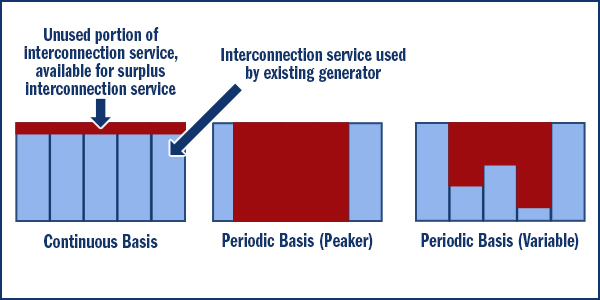By Michael Kuser and Rich Heidorn Jr.
BOSTON — Rejecting ISO-NE’s concerns over “disrupting” the interconnection queue, the NEPOOL Participants Committee voted Friday to broaden the RTO’s proposed rules for obtaining surplus interconnection service (SIS) under FERC Order 845.
Order 845, approved in April 2018, set pro forma minimum standards for large generator interconnection procedures and agreements. FERC said SIS, which would allow a customer’s affiliate or a third party to obtain unused interconnection service and would encourage more efficient use of existing infrastructure (RM17–8). (See FERC Order Seeks to Reduce Time, Uncertainty on Interconnections.)
The PC voted 67.58% in favor of an amendment by RENEW Northeast, an association of renewable energy providers and advocates, which said the RTO’s proposal did not comply with Order 845 because it would restrict SIS to a continuously available megawatt quantity and not allow periodically-available service. Order 845 said the service could be used at interconnections for generating units that operate infrequently, such as peakers, or that often operate below capacity, such as renewable generators. The amendment was introduced at the Transmission Committee by the Union of Concerned Scientists, a RENEW member.
RENEW also said the RTO’s proposal would restrict surplus interconnections to “non-material modifications to existing generators,” a more restrictive standard than FERC called for in its February order on rehearing (RM17-8-001; Order No. 845-A). (See ‘Boring Good’ Rulemaking Seeks to Clean up Order 845.)
In addition to allowing periodically-available service, the amendment eliminates the RTO’s “non-material” restriction.
After approving the RENEW amendment, which NEPOOL will file with FERC, the members rejected ISO-NE’s original proposal, with only 54.2% of votes in favor.
Transmission Owners’ Amendments
In addition to its provisions on SIS, ISO-NE’s proposed compliance filing deviated from FERC’s pro forma generator interconnection agreement (GIA) regarding customers’ option to build, prohibiting it in cases that would require the moving or outage of existing transmission equipment, NEPOOL counsel Eric Runge said in a memo to members.
Although the ISO-NE motion failed, the RTO is expected to file it with FERC, nonetheless. It includes provisions by transmission owners Eversource, National Grid and Avangrid, as represented by the Participating Transmission Owners Administrative Committee, that would allow them to collect “actual costs,” rather than “agreed upon” costs as in the pro forma, for overseeing customers who choose to build interconnection facilities.
ISO-NE Fears ‘Disruption’
ISO-NE had contended the RENEW amendment “conflates” SIS with a different provision in Order 845 that allows for co-location of more megawatts behind a point of interconnection but requires control technology to limit the output to the requested interconnection service levels and requires the filing of a new interconnection request.
In a memo circulated to NEPOOL members hours before the meeting, the RTO said its proposal “fully complies with Order No. 845 while not disrupting the existing interconnection framework used in conjunction with the markets.”
The memo said New England’s capacity network resource interconnection service (CNRIS) and network resource interconnection service (NRIS) “directly correlate to an interconnection customer’s desired level of participation in the New England markets, which do not utilize a system of physical rights like the pro forma services.”
CNRIS and NRIS are only available on a continuous basis.
“The RENEW approach proposes to ignore the unchanged requirement that a material modification requires a new interconnection request [and] calls for significant interconnection studies to be performed outside of the orderly queue process without addressing how those studies would be prioritized and coordinated with the evolving system changes that are articulated by the interconnection queue and other planning processes.”
RENEW disagreed, saying Order 845 requires the RTO to utilize an expedited study process outside of the queue to process SIS requests.
“We recognize ‘outside of the queue’ requests are disruptive, but that’s what the commission’s order said,” Susan Muller, of Boreas Renewables, who presented the RENEW amendment, told RTO Insider. “We’re not suggesting new applications behind the point of interconnection be approved if it causes any reliability problems.”
The RTO’s compliance filing is due May 22.
[See our Editor’s Note: We’re in the Room in NEPOOL!]



